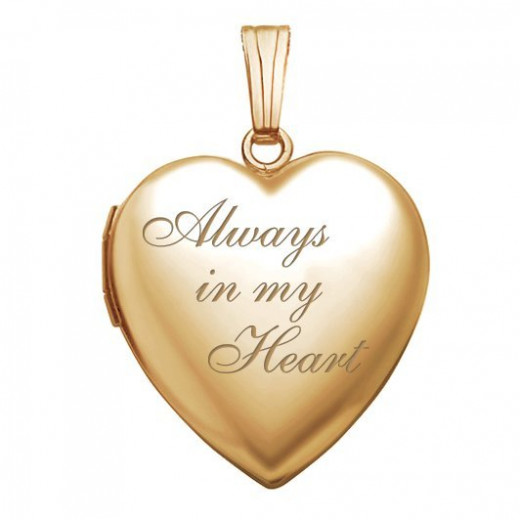Locket: Origin, History, and Significance of the Pendant

Most people know that a locket is a pendant and a beautiful piece of jewelry. That is about all they know about it. However, the locket has a very interesting origin and a rich history.
There are many different types of lockets. Some of them open up with a space to store a miniature photo or other small items such as a lock of hair, a coin, a scripture, a quote, a good luck charm, or a love letter on a tiny piece of paper. Some lockets are made to carry a small amount of ashes to keep the memory alive of a deceased loved one.
Lockets are usually given to loved ones to be worn on chains around the neck, but they may also be worn as a brooch, part of a bracelet, or a ring. Lockets are made in the shape of hearts, but they also come in circles and ovals. They can be made of either silver or gold. Some lockets are plain, and some of them are very decorative. It is not always the case, but most people like to give lockets with an inscription on the back. Therefore, the contents inside are not the only thing to remember.
Most lockets hold only one or two larger photos, but they could be custom made to can hold up to eight smaller photos. Lockets were once made with a small cushion inside so a few drops of perfume or essential oil could be added. That type of locket was once popular when personal hygiene was not available as it is today. A drop or two of perfume was used to mask the odors of people and their surroundings.
Lockets are not just for women to wear. Men can wear them too. Very few people know that lockets were once used as buttons on military uniforms that often held small compasses.
Significance of Lockets
Of all the many pieces of jewelry a person could wear, the locket is the most personal of all because it tells a story or serves as a reminder of something to remember. It is a keepsake for the one who receives it.
Lockets mean something to the receiver as well as to the giver. They bring back remembrance of a special person or event in someone's life. Lockets are symbols of love, honor, and loyalty. They usually contain an item that means something to the holder.

History of Lockets
The wearing of lockets can be traced back to the 16th century. They began to evolve throughout the 17th and 18th centuries. They were very popular with royal families and aristocrats. People wore them for different reasons including using them to hold an item to ward off evil spirits from around them.
During the 16th century, Queen Elizabeth I wore a ring every day with a small picture of her deceased mother, Anne Boleyn. In the 17th century, loyalists wore lockets with concealed compartments that hid a photo of King Charles I who was executed in 1649.
Lockets were very popular during the Victorian era. Women wore lockets around their wrists with velvet ribbons. Prince Albert gave his wife Queen Victoria a locket bracelet that held nine spaces. She kept a strand of hair from each one of their children in the spaces. When he died suddenly at age 42, Queen Victoria wore a locket containing a photo of her husband as a constant reminder of her grief.
It is interesting that during the 18th century, lockets were used as a form of identification. In the 1740s, lockets worn around the neck were ways to identify unwed mothers in England. When they gave up their babies to foundling hospitals, locket necklaces were issued to the mother and to the baby. If a mother returned later to claim her baby, she could prove the baby was hers if her half of the locket matched the half that the baby wore.
Lockets became a symbol of mourning in the 19th century. They were sold as mourning jewelry. They were expensive because they were made of black onyx and were owned mostly by wealthy people who could afford them.
Lockets became affordable when techniques emerged for mass production. They became an extremely popular piece of jewelry during World War I when soldiers and their loved ones exchanged lockets as symbols of their love while they were separated.
Lockets As Gifts
A locket is a great gift to give someone at any time of the year and on various occasions. Lockets make good gifts for Christmas as well as for Valentine's Day, Mother's Day, and Father's Day. They can be given to brides, new mothers, retirees, and on any special occasion.
Sometimes two people exchange lockets or half necklaces when they move away or are separated from each other for a while. The half necklaces don't have compartments for a photo, but it might have an inscription.








